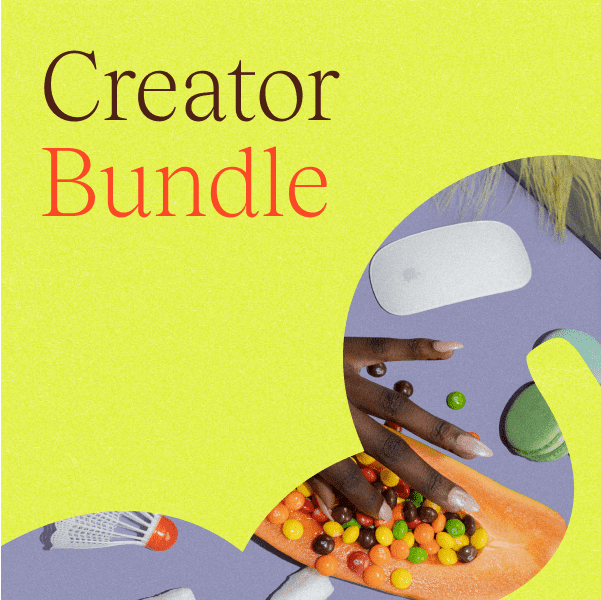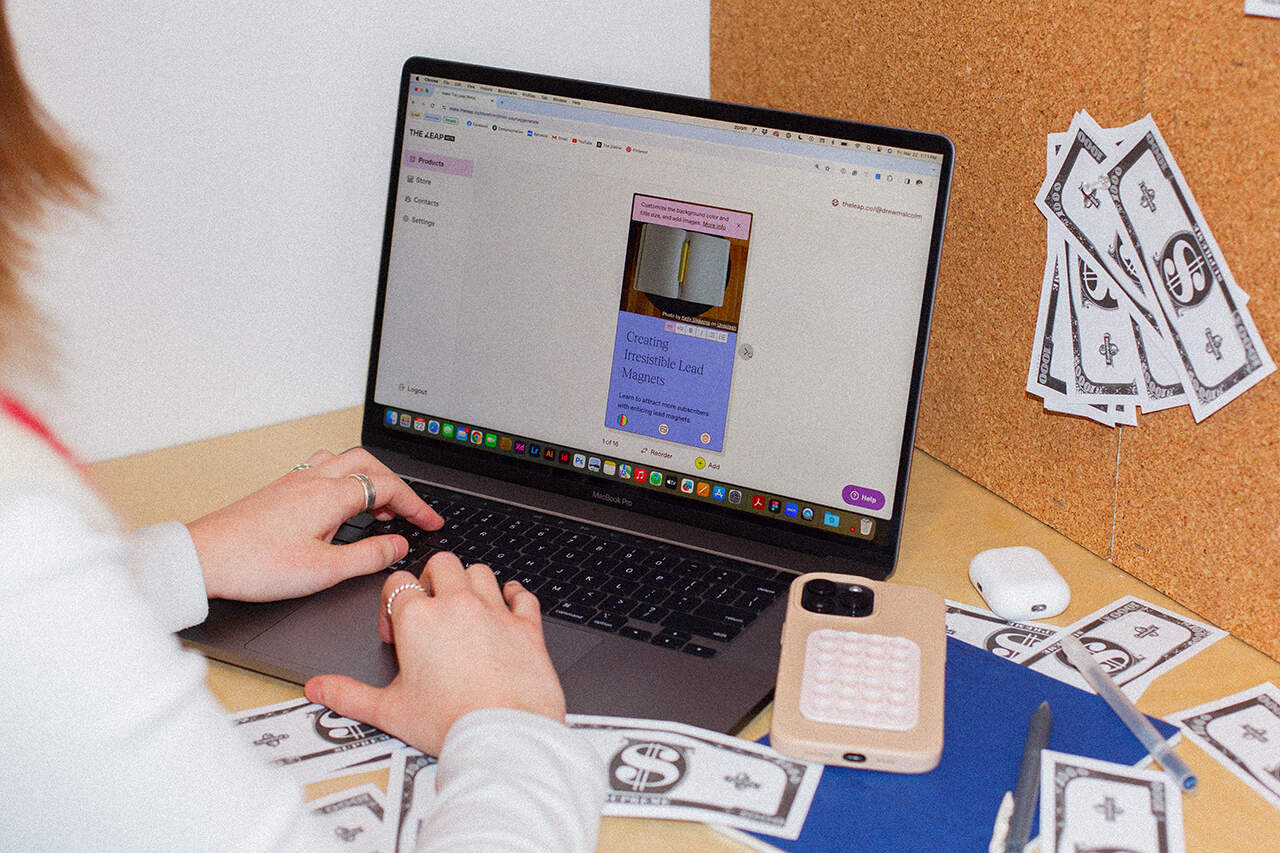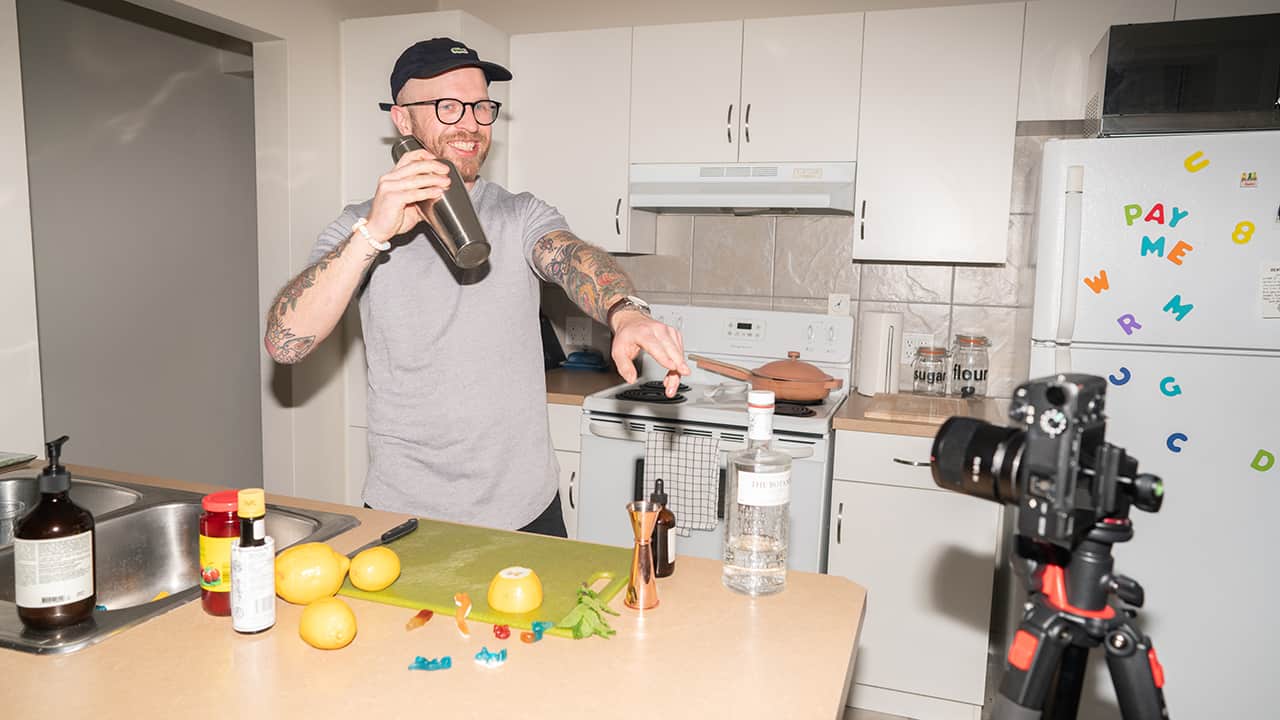If you like working out, being a fitness influencer seems just like the natural next step. Or rather, a dream come true — since you can get paid for doing what you enjoy, sharing your advice and fitness journey with others, while staying in shape. But is it really that easy to become a fitness influencer, especially when you want to make a living from it?
In this guide, we’ll look into what a health and fitness influencer does, the specific steps you can take to become one, and several tips you can apply to optimize your fitness social media content.
What is a fitness influencer?
A fitness influencer is someone who promotes healthy living, often by sharing their personal experience, tutorials, and advice on the topic of physical activity, dietary habits, and mental wellness.
They often create and share content through social media — for example, Instagram, TikTok, and YouTube — and/or on their own blog.
Fitness influencers with a social media presence can monetize their fitness journey by selling fitness courses and workout equipment, or by partnering with brands to promote their products and services.
How to become a fitness influencer
Here are five steps you can take to become a fitness influencer, and to earn a living by sharing your fitness journey online.
1. Find your niche
According to SignalFire, there are more than 50 million creators worldwide, with 93% (46.7 million) of them being amateur individual creators. So yes, the competition is fierce.
To stand out among the sea of fitness enthusiasts, and ultimately become a fitness influencer who’s able to monetize their audience, you need to know what your niche is.
There are numerous focuses in fitness you can choose from, including:
- Personal training
- Yoga
- Pilates
- Calisthenics
- Weight lifting
- Crossfit
- Dancing
- Running
- Nutrition
- Mental wellness
Some of these categories can be combined. For example, yoga and pilates, personal training and nutrition advice, etc.
If you already have experience or know that you’re going for a certain niche, proceed to research it and define your target audience. If you’re just starting out and not sure which niche to go with, just think of what you’re interested in and research several of them to decide.
2. Research your niche
You don’t want to embark on your influencing journey unprepared. Before deciding on your niche, make sure you research the state of the fitness industry, as well as successful fitness influencers and brands in your field.
Some questions you’d want to consider include:
- How lucrative is this niche?
- Who are the most successful fitness influencers in this niche?
- What platforms are they on? Is it TikTok, Instagram, YouTube, or a combination of all three?
- What platform are they most active on?
- How many followers do they have?
- What kind of content are they creating?
- What kind of content has the most and least engagement?
- Do they sell fitness courses or workout equipment?
- Do they partner with brands? If so, what are they?
- What are the most popular fitness brands in this niche?
- What products do they sell?
- Do they partner with influencers?
Ultimately, you want to find out if it’s worth it to invest your time, effort, and money in becoming a fitness expert.
As a new fitness influencer, it’s important that you choose a niche and stick to it. With the profusion of fitness influencers nowadays, people have raised their bar when it comes to who to follow. You need to become an expert in the fitness category you’re choosing, and mastering one or two niches is a lot easier than dabbling in all of them at once.
3. Determine your competitive advantage and target audience
Once you’ve done your research and identified your niche, it’s time to figure out your competitive advantage and target audience.
In other words, you need to know:
- What makes you different from your competitors?
- Why should people follow your advice and recommendations?
Again, there’s a lot of competition in the fitness space. If you don’t have a unique selling point that sets you apart from other fitness creators, it’s very difficult to stand out, let alone making money from your content.
Your competitive advantage will also help build up your brand and make people remember you more easily, thus helping spread your name through word of mouth.
Some of the angles you can think of include:
- Can you target a subset of your audience?
e.g. workout and dietary tips for vegans or vegetarians. - Do you have a certification or background in fitness or nutrition that gives your advice more credibility?
e.g. Caroline Girvan is a certified personal trainer and nutritional coach before she started posting content on YouTube. - Do you have any personal experience that will resonate with or inspire your target audience?
e.g. Sydney Cummings posted workout videos while she’s pregnant. - Can you combine fitness content with something else to make you stand out?
e.g. MadFit and Pamela Reif offer lots of fun dance workout tutorials.
Once you’ve determined your selling point, think of who your target audience is and what their needs are. What kind of content do they need? What are the best ways to deliver that kind of content to them?
Of course, there’s no easy way to answer all these questions as you’re starting out. You can first gain some insights into your target audience by researching your competitors’ audience, or talking to people who you think will find your content useful.
When you’ve got your fitness profile up and running, you can directly ask for feedback from your audience and finesse your content to their needs.
Ready to start earning money online?
Sign up to The Leap newsletter for useful tips, free resources, and insights from creators, delivered weekly right to your inbox.
4. Define your goals and develop a strategy
If you want to earn money as a fitness influencer, you need to treat this as an actual business. This means having clear goals to help guide your journey from the ground up, and having a strategy to build and grow your fitness profile.
Setting your goals
Think of what you want to achieve over a certain period of time and set your goals. For example, how many followers do you want to have after the first three months of posting your content? How many brands do you want to partner with within the first year?
Come up with short-term and long-term goals, and use these to guide your fitness creator journey. Note that you should consistently reflect on your performance and adapt your goals accordingly.
Content distribution platforms
The type of content you’re creating needs to suit the type of content your target audience wants to consume — you need to meet them where they are.
So research the platforms your target audience is most active on. These are often social media platforms like TikTok, Instagram, or YouTube. You may not have time to create content for all of these platforms right off the bat, so focus on one of them and expand on your content distribution strategy later.
Interested in becoming a TikTok fitness influencer? Check out our guide on how to optimize your TikTok videos for search.
Besides social media posts, you can create and distribute content through your own website. You can share written content like recipes or cookbooks, and sell fitness equipment on your website.
When you’ve gained a substantial following and are ready to sell a fitness course, you can also explore online course creation platforms like Thinkific down the line.
Content promotion strategy
Once you’ve figured out what kinds of content to create and where to post them, think about your promotion strategy.
Most influencers start out on social media as there’s already an existing pool of audience you can tap into. Of course, besides just posting content on your social media accounts, you can also promote it through:
- A fitness community (e.g. a Facebook group)
- A Reddit thread
- Collaborating with other influencers
- Collaborating with brands
- Running ads
- Word of mouth (you can’t really control this, but you can contribute to it by creating consistent, valuable content)
5. Monetize your fitness journey
When you’ve garnered a certain following, here are some ways you can start monetizing your fitness content:
Share advertising revenue
This is the simplest way to start monetizing your content. You can earn revenue from having advertisements on your page — these could be on your blog if you have enough traffic, or on your YouTube channel if you have enough views.
Take YouTube for example. If you qualify, you can enter the YouTube Partner Program. Here are the minimum eligibility requirements:
- Follow all the YouTube channel monetization policies.
- Live in a country/region where the YouTube Partner Program is available.
- Have no active Community Guideline strikes on your channel.
- Have more than 4,000 valid public watch hours in the last 12 months.
- Have more than 1,000 subscribers.
- Have a linked AdSense account.
Once you meet those criteria, you can start putting ads on your videos. You only make money if your viewers don’t skip ads. According to Influencer Marketing Hub, the average YouTuber makes $18 per 1,000 ad views, which translates to $3-$5 per 1,000 video views.
Collaborate with brands
Once you have a certain amount of followers, you can start reaching out to brands for partnerships. Even better, brands may approach you for sponsored content.
The amount you can earn through sponsored posts varies quite a lot, mostly depending on how many followers you have.
If you’re ready to reach out to fitness companies, make sure you create a media kit that sums up your brand and offering. Don’t be afraid to follow up if you don’t hear back the first time. Apply the feedback they provide, and refine your content and media kit before approaching another brand.
Productize your service
You can sell your service (i.e. fitness advice) as a form of product, whether it’s physical merch or a digital product.
Here are some examples of products you can sell as a fitness influencer:
- Fitness courses/programs
- Fitness guides
- Nutritional guides
- Cookbooks
- Personal training sessions
- Fitness apps/subscriptions
- Workout food/snacks/supplements
- Workout equipment (e.g. resistance bands, yoga mat, leggings, etc.)
Looking for a low-effort way to generate streams of passive income? Learn how to earn money from creating and selling digital products.
A lot of influencers have been running this route. Natacha Oceane sells training programs and nutrition guides on her website. Yoga with Adriene offers yoga courses and guides and a membership program. Lilly Sabri has a mobile app called LEAN with monthly subscription offers, in addition to selling workout equipment and protein bars on her website.
Want to start monetizing your fitness journey by selling digital products? Try The Leap’s AI-powered digital product builder today.
Tips on optimizing your fitness content on social media
Now that you have a concrete idea of how to become a fitness influencer, let’s take a look at some tips you can apply while building your social media profiles to optimize your following gain.
1. Regularly interact with your audience
Like any content creator, you’d want to build a relationship with your audience. After all, your success as a fitness influencer largely depends on them.
Make sure you regularly interact with your followers. You can respond to their comments, make videos and posts to show your appreciation, create giveaways to give back to your followers, run polls on the kind of content they wish to have (and create that content), and ask for their feedback on your current content.
2. Build valuable, actionable, fact-checked content
With so many fitness influencers and enthusiasts out there, your followers will have a high standard when it comes to fitness content.
Make sure your content is actionable and backed up with scientific evidence. Ideally, you should get certified as a fitness coach, personal trainer, or nutrition coach if you want to provide advice and make money in those niches.
Having proper, fact-checked content plus certifications can help increase your credibility and set you up as an expert in your niche — which can attract more followers and in turn, help build your brand.
3. Set up a social media calendar and post consistently
Posting consistently can help you gain followers, as people now know when to expect your content. This can positively affect your engagement, which is something that brands look for when it comes to social media influencers they can collaborate with.
Make sure you create a backlog of content (or at least, content ideas) you can post and schedule them with a social media calendar. You should aim to have at least one week’s worth of content ready to account for any emergencies, such as sickness.
4. Track, reflect, and act on your results
Data is important when you’re trying to become a successful fitness influencer. You need data to know what’s working, what’s not working, why, and how you can improve in the future.
Regularly report on social media metrics as you’re starting your creator journey. These include the number of followers, traffic, engagement rates, click-through rates, and more. Pay attention to the kind of content that hooks people in, and regularly experiment with your content to know what works for you.
This is especially important when it comes to partnering with brands, since they need data to know whether it’s worth it to work with you. Having your results ready can also help build your influencer portfolio and media kit when you want to reach out to brands.
Put in the work and you can become a successful fitness influencer
It’s not easy, but certainly not impossible to make money as a health and fitness influencer. To start getting paid for sharing your fitness advice and tutorials, make sure you follow our guide and tips to optimize your fitness social media profile.
Follow The Leap on TikTok and Instagram for more monetization tips for creators. We also make a newsletter.




